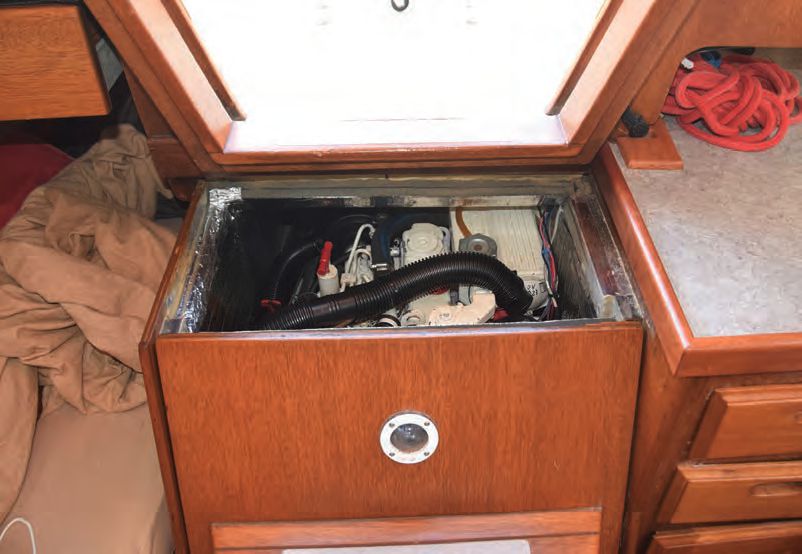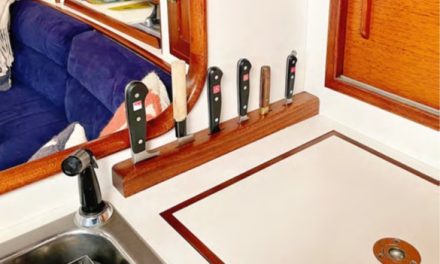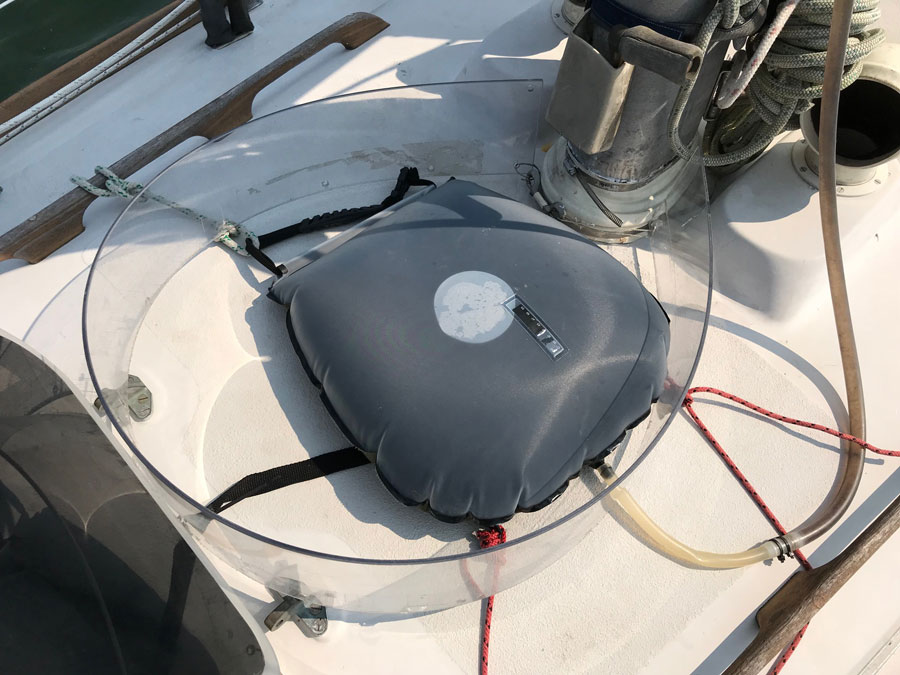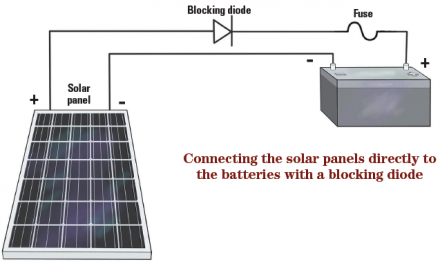Finding a sensible solution to an alternator’s persistent overheating problem
Issue 154: Jan/Feb 2024
Over the years, and with two different small diesels working in the tight quarters of the engine compartment of our 1978 Islander Bahama 30, we have consistently suffered from overheated alternator syndrome. Simply put, not enough airflow over the alternator necessitated ongoing repairs to this vital engine component.
After a few lazy days at anchor, we would start motoring out of the harbor to raise sails or head to our next destination if there was no wind, or simply to charge up the batteries, and the 30-amp generic alternator on the old Volvo MD7A would soon stink up the engine compartment (and main cabin) with a hot metal odor. It was a simple system with no gauges, and one of which I had somewhat limited knowledge. I had the alternator rebuilt every spring as a preventive measure, and the technicians commented on persistent “overheating” damage.
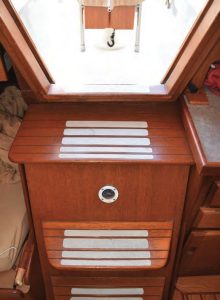
As on many sailboats, the Islander Bahama 30’s engine is housed under the companionway steps.
When we put in a new Beta 20 engine, with the optional 70-amp alternator, I installed a Balmar Max Charge MC-614 external smart regulator. Designed to monitor and control battery charging, the Balmar unit includes temperature sensors for the alternator and the battery bank. The 614 is preprogrammed to throttle back alternator amperage when the alternator frame reaches 212 degrees Fahrenheit (100 C). This, I learned from the local technician, is the recommended maximum temperature to keep the alternator in good health, which was helpful to know.
During the first summer with the new engine, I noticed the regulator showing the alternator reaching 212 degrees quite quickly when there was a high demand for amperage from the low batteries. This was typical after a few days at anchor. The regulator would cut back output and the temperature would stabilize, just as it was programmed to do. But as a result, it would take far too long to charge up the batteries. There had to be a way of keeping the alternator cool while keeping the amps coming.
As on many older boats, the Islander’s engine compartment is under the cockpit sole, with access behind the companionway stairs and some side panels. When I installed the Beta, I fully refurbished the compartment to try to contain engine noise as much as possible. This included 1-inch-thick sound-dampening panels glued and taped onto all applicable surfaces, as airtight as practical. The compartment had a blower to extract dangerous fumes and an equal size air intake, both connected to vents on the stern. Both openings into the engine compartment were low at the aft end. Turning on the blower moved a large amount of air at the rear of the engine compartment, but air movement at the front was negligible.
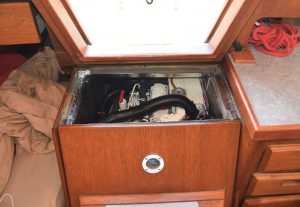
Opening the top of the companionway helps keep the alternator cool, but is a poor solution.
The alternator on the Beta is high on the front of the diesel, as far from the cool air intakes of the compartment as it could be. Through experimentation, I learned to take the top step of the companionway stairs off to open airflow through the compartment. This dramatically lowered the indicated alternator temperature, and full charging would resume. That confirmed that the hot air at the front of the compartment was not circulating. But removing the step defeated the purpose of all that soundproofing, and it was also a bit hazardous when entering or exiting the cabin. There had to be an alternative that would increase airflow around the alternator without compromising the integrity of the compartment.
Then I watched a YouTube video in which a mechanic mentioned the vast volume of air consumed by a running diesel. A lightbulb flashed on! Could the air intake of my Beta be used to circulate cooler air from the rear of the compartment forward to the alternator?
With that in mind, I used some inexpensive bilge hose of the same diameter as the air filter intake to build a snorkel from the air filter to just above the alternator. The volume of air being sucked into that hose was obvious. The overheated air from the top forward end of the engine compartment near the alternator was now being evacuated by the running engine. The cooler outside air entered through the rear vent, then flowed under the engine and past the alternator before being sucked into the snorkel. Under heavy demand, temperatures now reached 140 to 180 degrees on the alternator frame, but did not exceed the 212-degree threshold programmed into the regulator. Maximum alternator output continued for the programmed time without overheating damage.
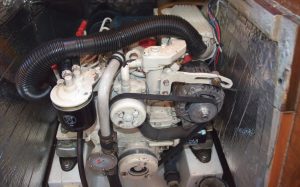
Creating a snorkel of inexpensive bilge hose attached to the air filter intake keeps the alternator cool while putting amps into the batteries.
From my experience with high-performance cars, for which cold intake air is sought for increased horsepower, introducing hot air into an engine intake was against all my instincts. But a typical sailboat diesel, even running at 80% of rated capacity, is well below its highest output. And I’m not trying to get every available bit of horsepower out of a sailboat engine anyway.
With a summer cruise now under the keel, this solution has proven that the alternator temperature issue has been resolved. Although this practical solution may not fit all applications, if space is tight and airflow is an issue, it may be worth considering on your own boat.
Bert Vermeer and his wife, Carey, live in a sailor’s paradise. They have been sailing the coast of British Columbia for more than 40 years. Natasha, an Islander Bahama 30, is their fourth boat (following a Balboa 20, an O’Day 25, and another Islander Bahama 30). Bert tends to rebuild his boats from the keel up. Now, as a retired police officer, he also maintains and repairs boats for several nonresident owners.
Thank you to Sailrite Enterprises, Inc., for providing free access to back issues of Good Old Boat through intellectual property rights. Sailrite.com

